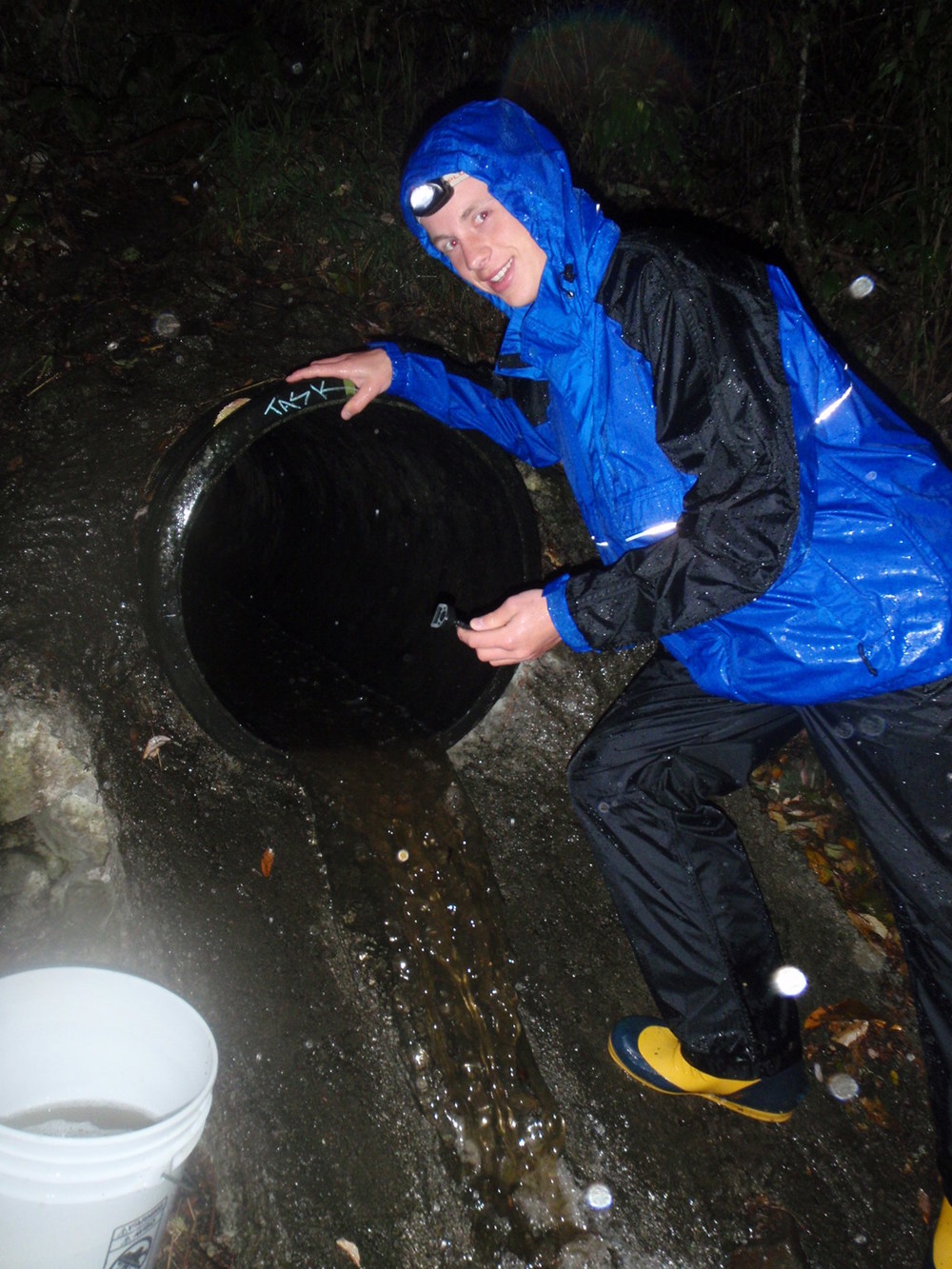At 1:30am Monday morning I received a wake up call. Brian was on the line and he announced it was time to assemble for First Flush. Aimee and I suited up in rain gear and headlamps. We joined volunteers at the Surfrider Lab in Princeton for the first rain of the season. Karissa Anderson with the San Mateo County Resource Conservation District provided everything we needed to do sample collection and she provided on-site technical support via cell phone as well as chocolate chip cookies at the lab. Our team collected water samples from San Vicente Creek at the Fitzgerald Marine Reserve and two storm water outfalls near Pillar Point Harbor.
First Flush water quality sampling events take place up and down the coast of California.
What is first flush? 
First Flush is an annual, volunteer monitoring event that samples storm drain runoff during the first significant rainfall of the wet season. During the first rainfall, water washes significant levels of pollution off street surfaces, driveways, and curbs and into storm drains. This concentrated mix of often polluted water flows directly from these storm drains into creeks, rivers, Gulf of the Farallones National Marine Sanctuary, Monterey Bay National Marine Sanctuary and Critical Coastal Areas.
What do you do?
Volunteers monitor specific storm drains during the first initial runoff. Volunteers are trained to collect water samples that are sent to a professional lab to assess levels of non-point source pollutants such as nutrients (nitrate, orthophosphate and urea), metals (copper, lead and zinc), bacteria (total coliform, enterococcus and E.coli), hardness, and total suspended solids. Additionally, volunteers are trained to monitor water temperature, conductivity, pH, and transparency at the storm drains. Get in touch with your inner scientist and help track water quality!
How is the data used?
First Flush results are compared to the Central Coast Ambient Monitoring Program’s (CCAMP) Action Levels. These action levels are not used for regulatory purposes. Rather, they provide guidance on potential impacts to the health of the marine ecosystem. First Flush results illustrate the impact of non-point source pollution generated through our daily interactions in the environment – high metal concentrations can be attributed to car brake linings, high nutrient concentrations can be linked to fertilizers, and high bacteria concentrations are generated by failing sewer and septic lines, wildlife and pet waste.